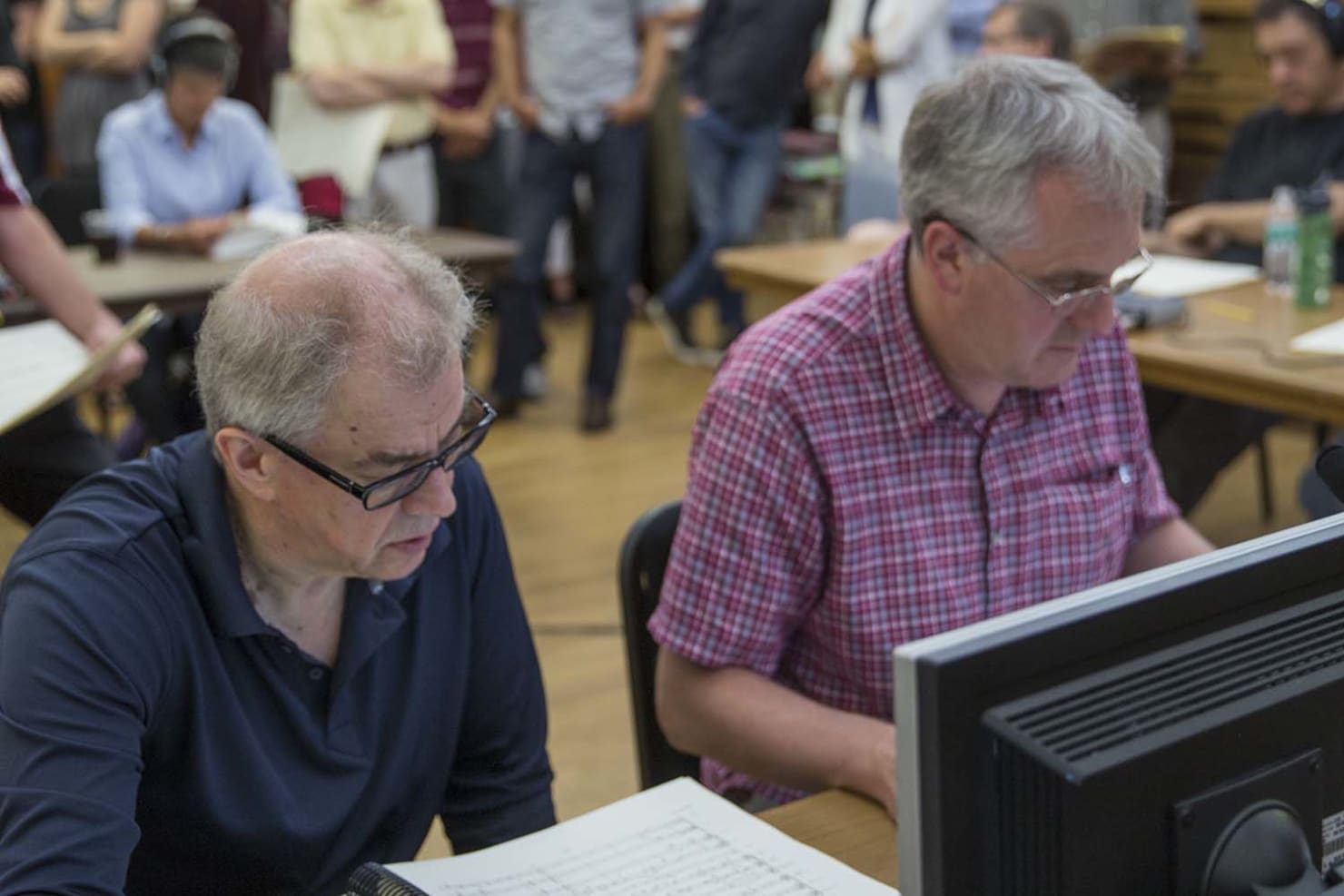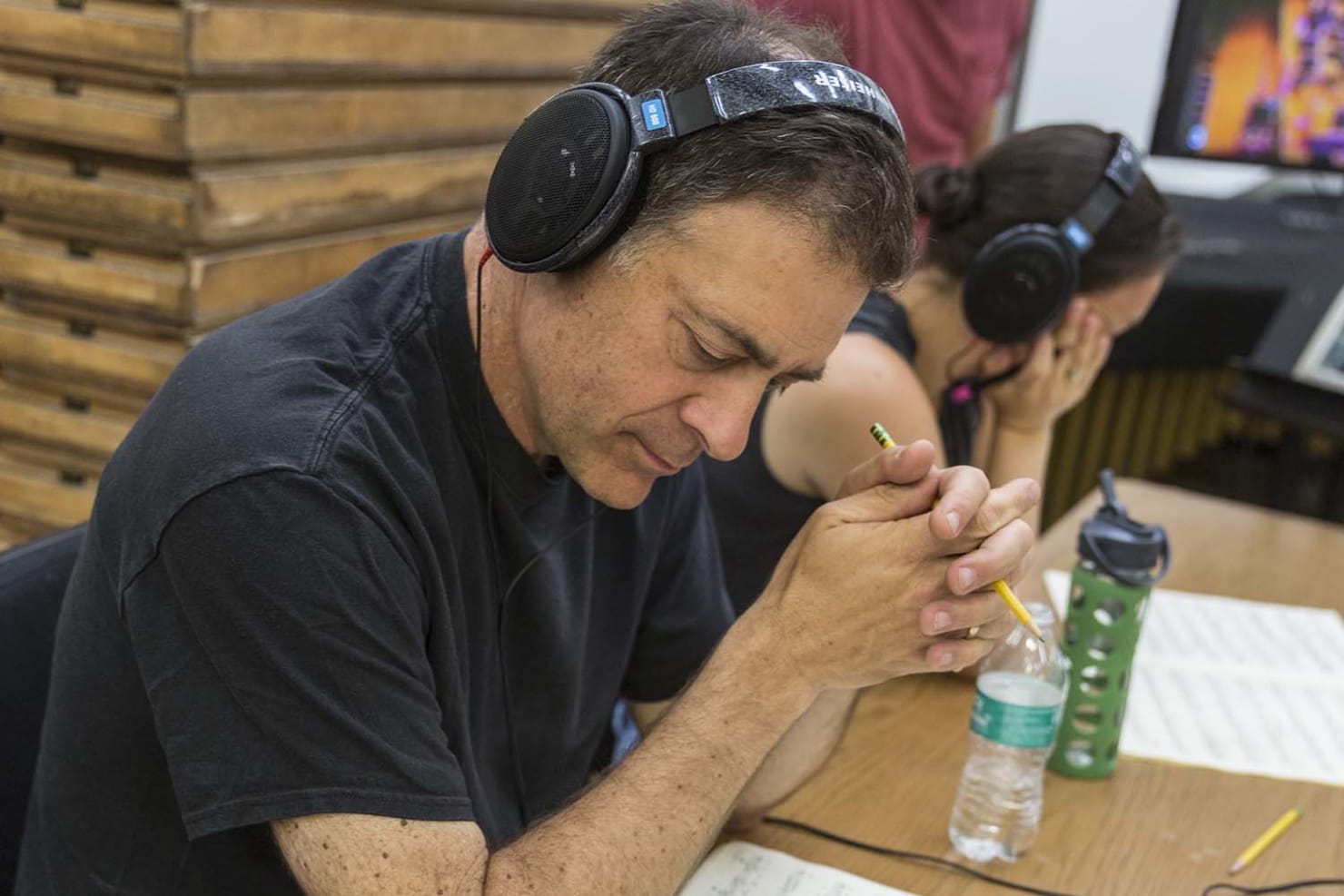Peak of Perfection: Recording a Musical Legacy

As Orchestra Hall turns into a recording studio in March while Music Director Osmo Vänskä and the Minnesota Orchestra record Mahler’s Ninth Symphony, we revisit a favorite feature by writer Matt Philion. Written in the fall of 2018 when the Orchestra was in the earlier stages of its Mahler recording cycle, the essay explores the pull of posterity on symphonies as they weigh projects and priorities.
By Matthew Philion
It’s a minor miracle that today’s orchestras record at all. Committing to tape a world-class ensemble like the Minnesota Orchestra is an expensive and complicated undertaking. So the question arises: why do symphony orchestras continue to record?
First, a professional-quality commercial recording is a sonic postcard that carries an orchestra’s sound and style to the rest of the world. For example, in the 1950s and 60s, the Mercury Records label frequently recorded the Minneapolis Symphony (now known as the Minnesota Orchestra, of course), as part of their Living Presence series. Through a combination of expert playing, effective marketing, and the label’s unequalled technical abilities, the Orchestra garnered world-wide attention almost overnight. Those recordings set standards of performance and sound quality that continue to this day.

Recordings also motivate an ensemble to play near the peak of perfection. Before a recording date arrives, each player has mastered a work’s challenging parts, they’ve rehearsed the piece together, they’ve presented it in concert two or three times. The recording sessions that follow allow them to demonstrate their very best musicianship. As the Minnesota Orchestra’s Principal Trombone R. Douglas Wright puts it, “Every time we record, we grow and improve as an orchestra. The recording process is somewhat like taking the orchestra’s playing and putting it under a microscope. During play-backs, we really get to hear what we sound like in a much more objective way than we do while sitting on stage. When you’re putting something out there that’s going to last forever, it really inspires you to be meticulous in your approach to playing and listening."
Conductors have unique challenges in making that “perfect” recording. For the Minnesota Orchestra’s series of albums featuring the music of Jean Sibelius, Music Director Osmo Vänskä had daunting competition—his own highly regarded recordings of the same works made with a different ensemble earlier in his career. It’s a testament to Vänskä’s ability to learn new insights from the scores that classical listeners responded so well to his “new” Sibelius, leading to a Grammy award in 2014 for Best Orchestral Performance for the First and Fourth Symphonies.
Finally, orchestral recordings are kinetic documents that preserve an ensemble’s legacy. A case in point: conductor Antal Dorati’s classic 1957 stereo recording with the Minneapolis Symphony of Aaron Copland’s Rodeo, which sounds as fresh and idiomatic now as the day it was put to tape. It’s a vibrant performance that caught a moment in time: the conductor’s skill with Copland’s music, the acoustics of the hall (Northrop Auditorium), the musical styles of the individual players, even the unique instruments they played. Listeners enjoying the Minnesota Orchestra’s more recent performance of Saint-Saëns’s Third Symphony (performed in the updated Northrop) could marvel at the continuing perfection and relevance of their hometown orchestra, sitting in the same hall that Antal Dorati made famous with his recordings over a half century ago.
Maestro Vänskä and the Orchestra’s first releases in the Mahler series reveal a true affinity for the Austrian composer’s sound world. Upcoming releases will undoubtedly add to the ensemble’s heritage of classic, timeless recordings—and offer future generations a musical snapshot of this singular moment in Minnesota Orchestra history.
Matthew Philion is an attorney, writer, teacher and amateur trombone and euphonium player.
Under Music Director Osmo Vanska’s baton, the Orchestra has recorded complete symphonic cycles of works by Beethoven, Sibelius and (now underway) Mahler on the BIS Records label. The Orchestra was named Gramophone Magazine’s 2021 Orchestra of the Year, nominated in part because of its recorded body of work.






